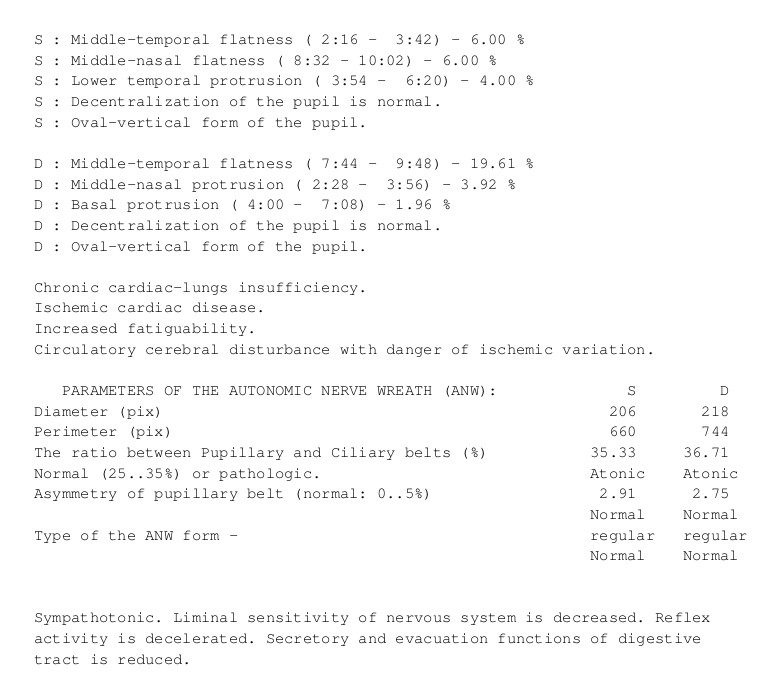Frequently Asked Questions
What is included in the Bexel Lab Results?
Biometric data analysis to determine several parameters of the pupil including Miosis, Mydriasis, Anisocoria, Deformation of Pupils (drawing in-out, oval-elliptic forms, local flatness, sector deformations, decentrations and Multiformities). All assessments include the Bexel lab report. It is recommended to re-test the Bexel lab report at least once a year to review changes in the pupillary and collarette parameters. 1: ClinicalWhy is the Bexel Lab Data Important?
Iridology assessment is based on actual scientific clinical research and development
Our assessments are based upon the Bexel Irina system which successfully achieved FDA approved status as medical device class 3 in Korea, following the highly successful Korean government certified clinical studies held at AJU University. You can review the clinical study here.
2: Accuracy
Precise Bio-Metric Examination
Our Iridology Analysis assessments offers precise examination of the pupil, collarette and iris sectors using an exclusive bio metric algorithm that has the ability to scientifically measure the human eye with accurate measurements and calculations.Review the Bexel Irina Pupil and Collarette Sample Report:

